Australian Tropical Rainforest Plants - Online edition
Caesalpinia crista L.
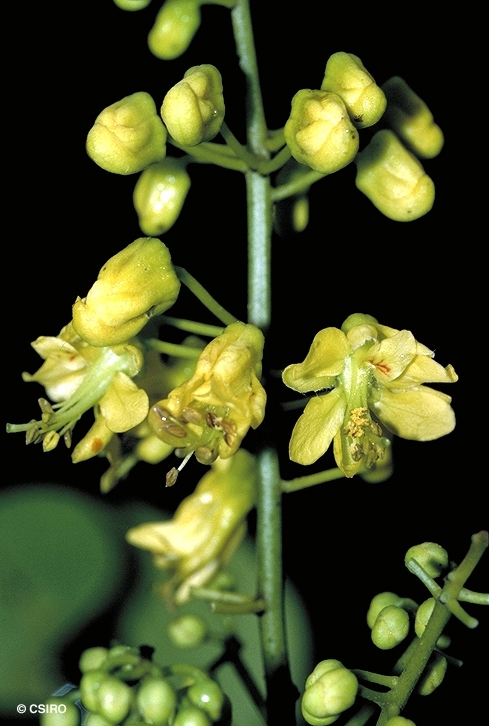
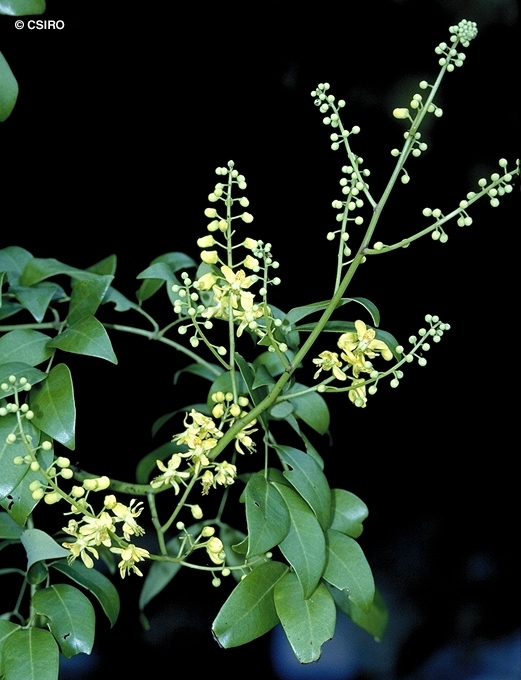
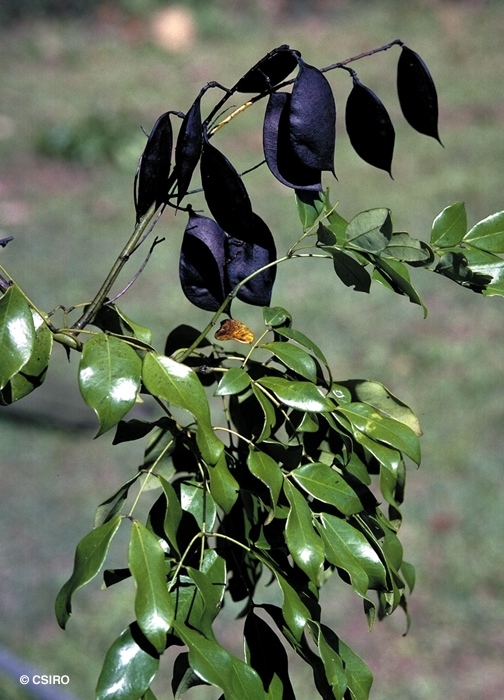
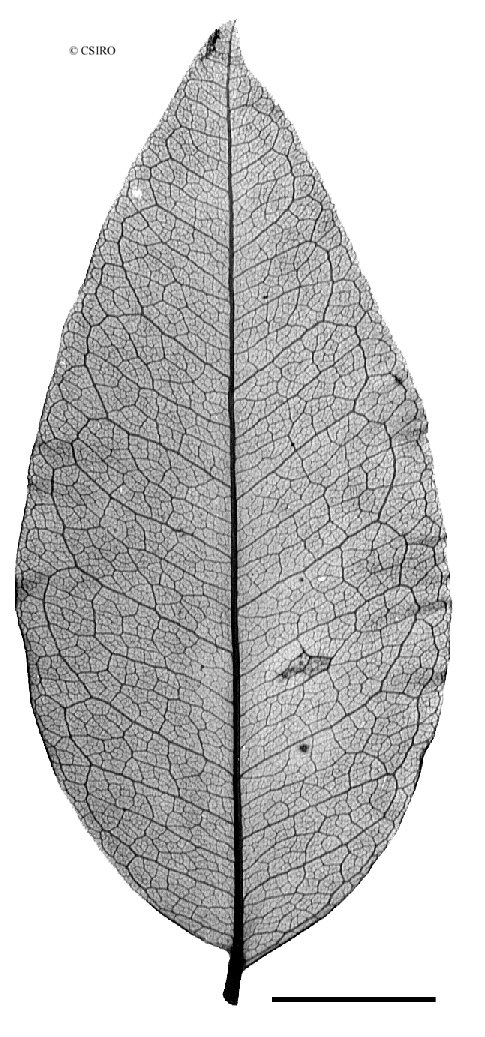
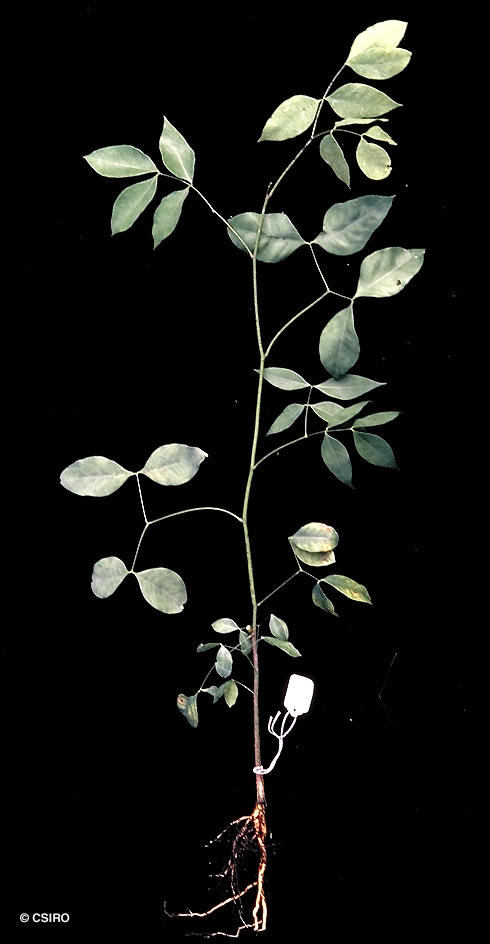
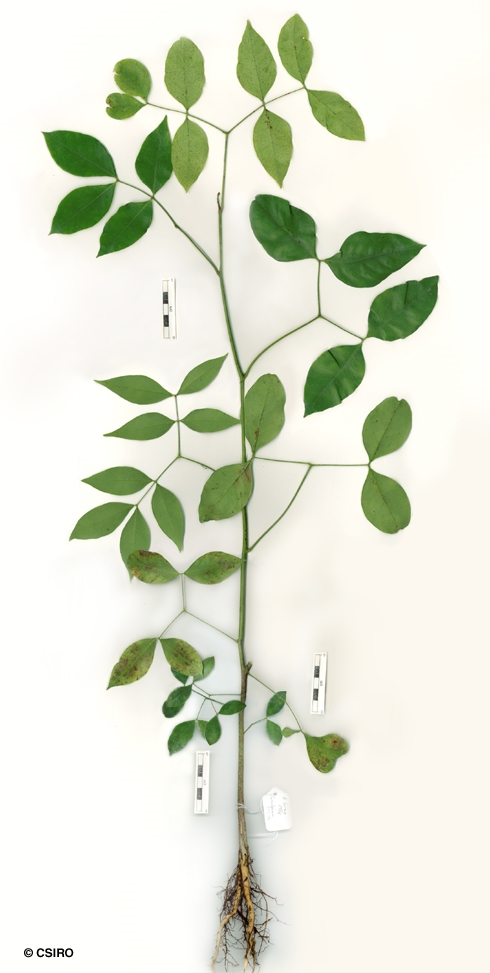

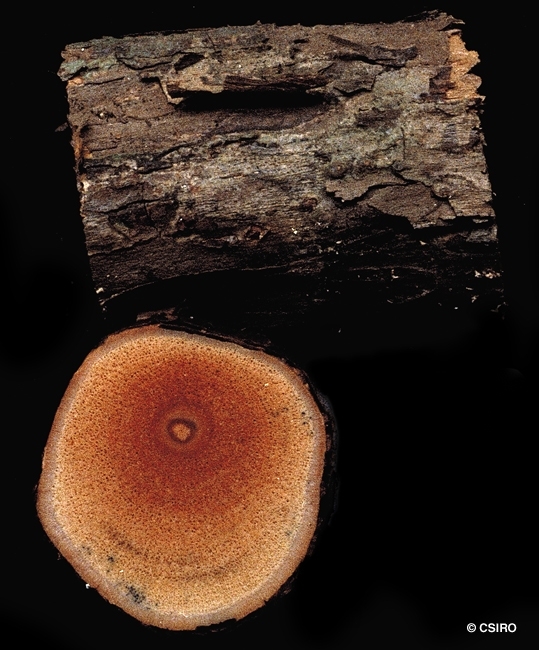
Linnaeus, C. von (1753) Species Plantarum 1: 380. Type: Habitat in Zeylona.
Vine stem diameters to 10 cm recorded. Stems armed with spines.
Stipules about 1-1.5 mm long, inconspicuous. Recurved spines about 1-2 mm long present on the underside of the compound leaf rhachis and sometimes also on the secondary axes. Leaflets usually more than 60 per compound leaf. Leaflet blades about 1.5-6 x 1-2.5 cm, leaflet stalks about 2-4 mm long, slightly swollen and transversely wrinkled. Lateral veins about 7-9 on each side of the midrib.
Flowers yellow, pleasantly perfumed, about 12 mm diam., pedicels about 5 mm long. Calyx lobes about 5-8 mm long. Petals variable, about 5-9 mm long, the upper petal with reddish markings on the inner surface towards the base. Stamens 10, filaments green, about 9-10 mm long, clothed in long white hairs about 3 mm long particularly on the lower half . Anthers about 1.5 mm long. Pollen orange. Ovary shortly stalked, stigma not much wider than the style. Style about 7 mm long. Ovules one per ovary.
Fruits flattened, about 50 x 25-30 mm. Seeds flattened, wider than long, about 15-23 x 22-35 mm. Cotyledons flattened, about 15-20 x 35 mm, inner (adaxial) surfaces sculptured with numerous smooth ridges and humps.
Usually 3-7 cataphylls produced before the first true leaves. First and second leaves usually bipinnate each with four leaflets, two leaflets on each secondary axis. Leaflets elliptic, apex acuminate, base cuneate, glabrous. Compound leaf petiole and secondary axes each end in an elongated linear gland about 1-3 mm long. Stipules linear, about 1 mm long. Third and fourth leaves bipinnate, each with four leaflets. One or two small raised glands usually visible on the upper surface of the secondary axes near the junction with the leaflet stalks. At the tenth leaf stage: leaf bipinnate usually with 4 leaflets on each secondary axis. Leaflet blades ovate to elliptic, apex acuminate, base cuneate. Small peg-like glands usually present on the upper surface of the primary compound leaf axis near the junction with each pair of secondary axes and also on the upper surface of secondary axes near the point of attachment of the leaflets. Stem often armed with recurved thorns about 3-4 mm long. Stipules narrowly triangular, about 1 mm long. Seed germination time 14 to 60 days.
This taxon will eventually move to a new genus, probably Ticanto.
Food plant for the larval stages of the Pale Ciliate Blue Butterfly. Common & Waterhouse (1981).
This species may have medicinal properties. The seeds are used in the manufacture of necklaces. This species has been used as a drench for the treatment of worms in livestock(?).





